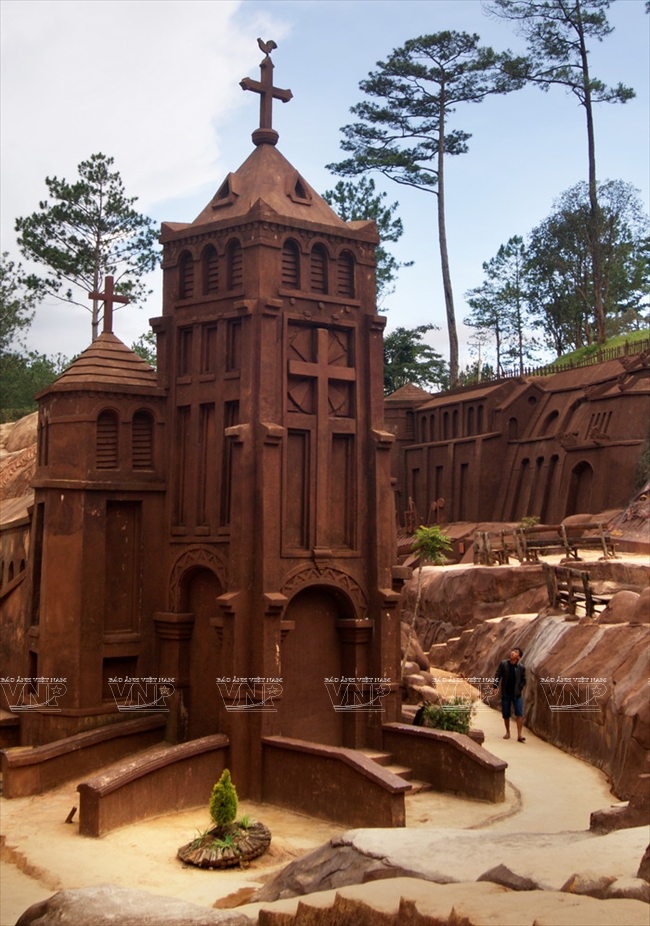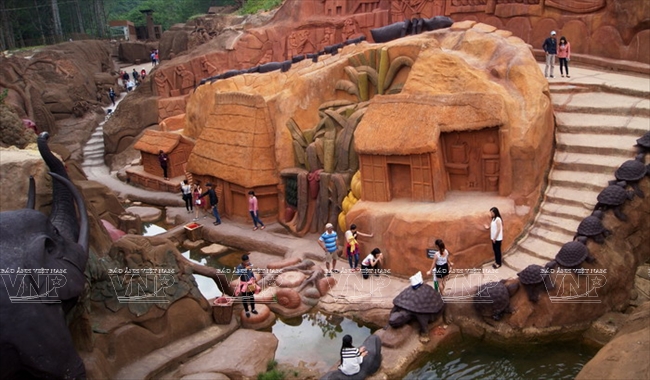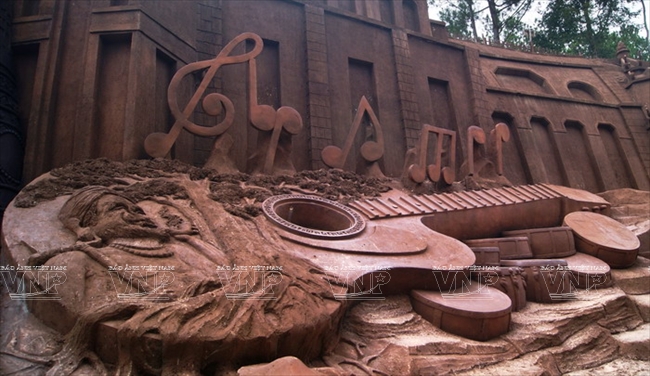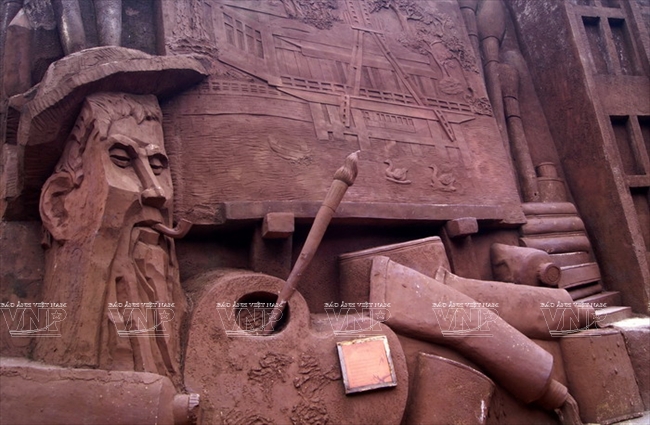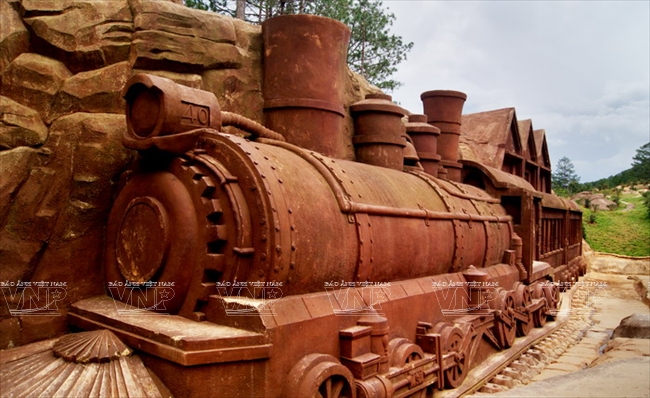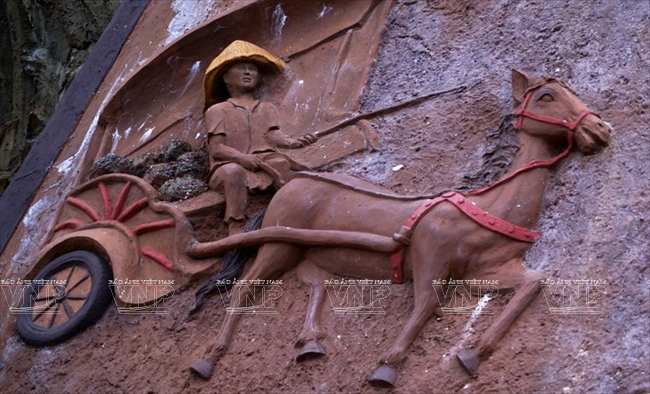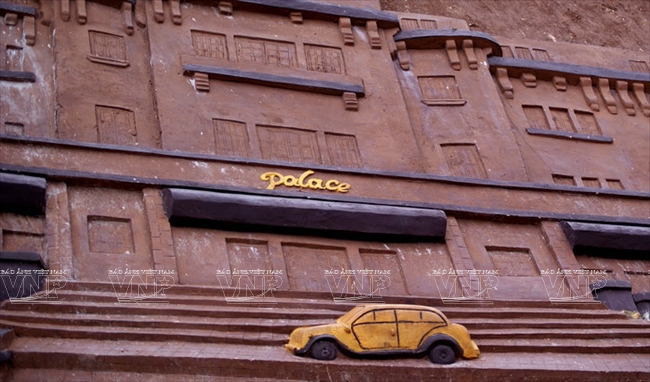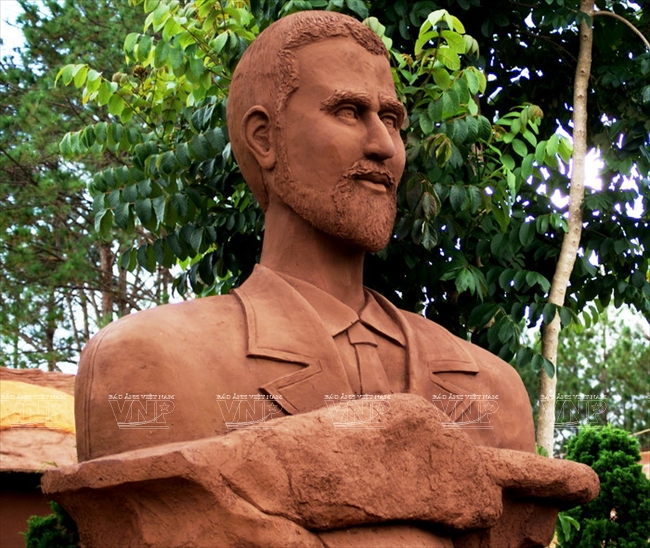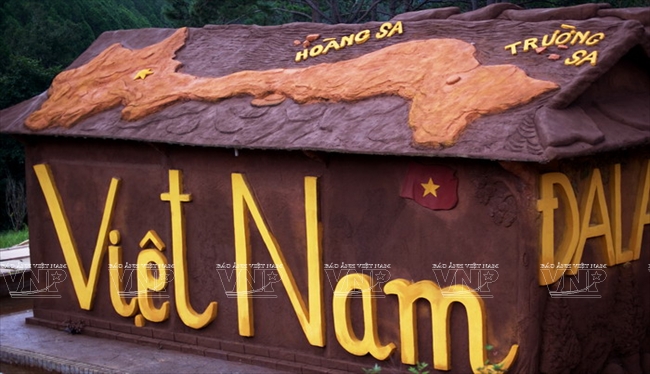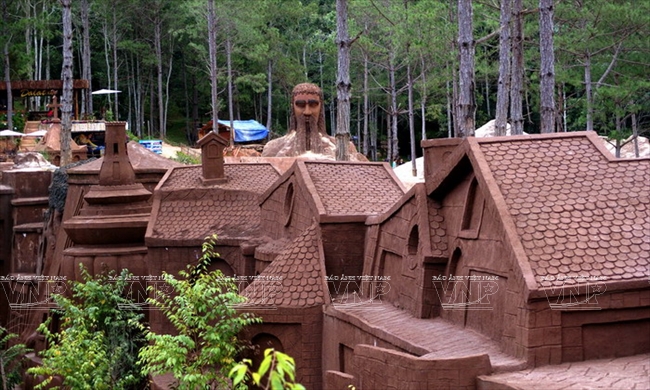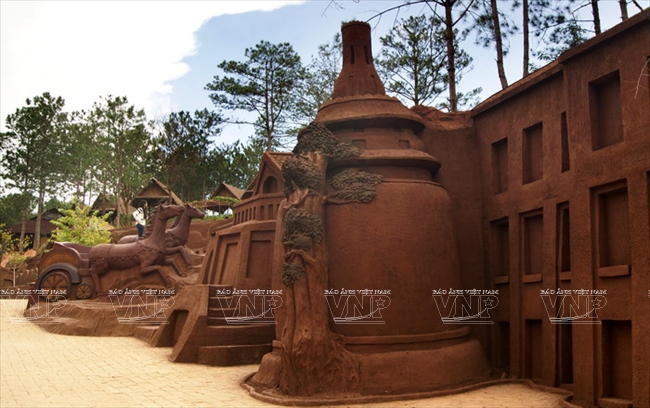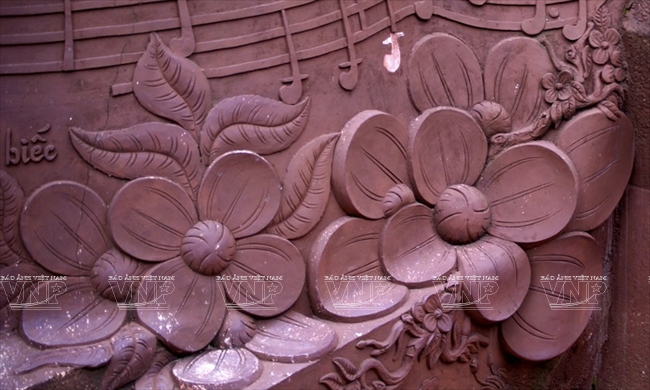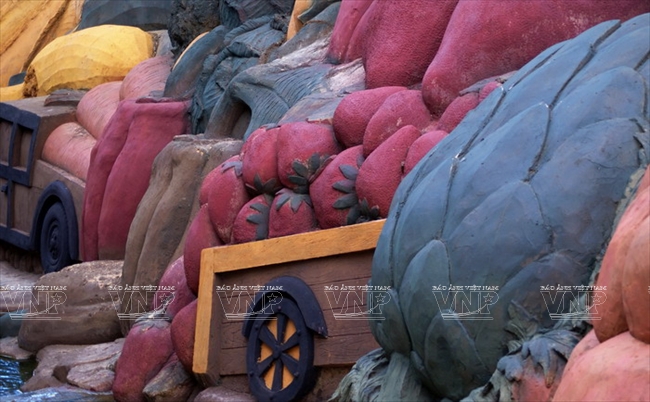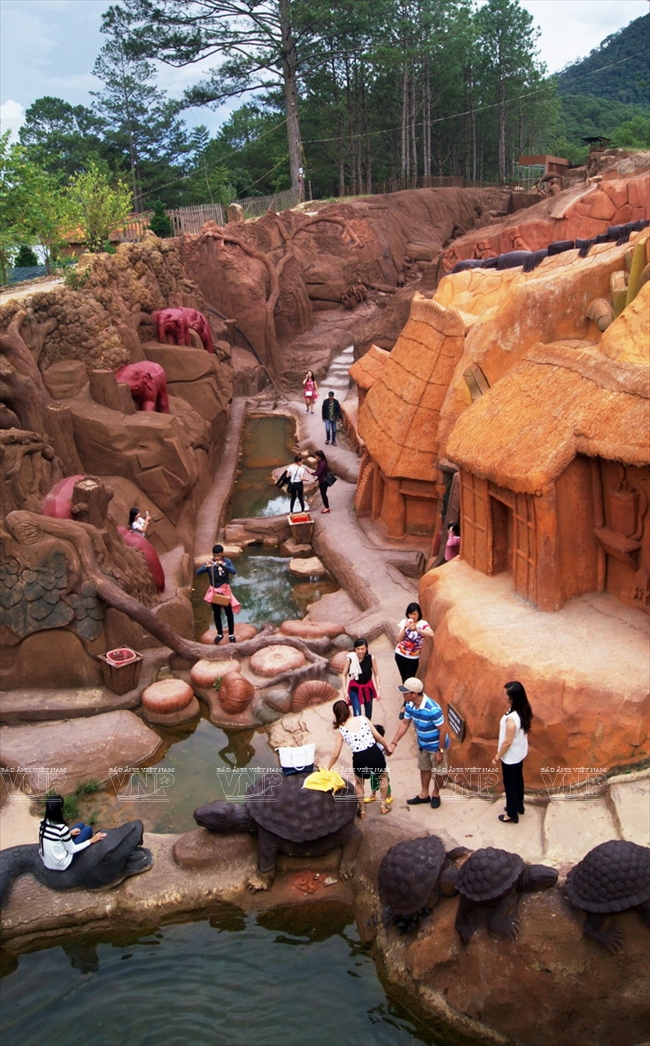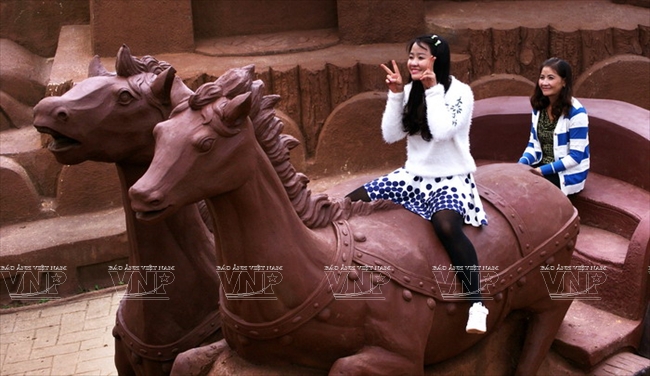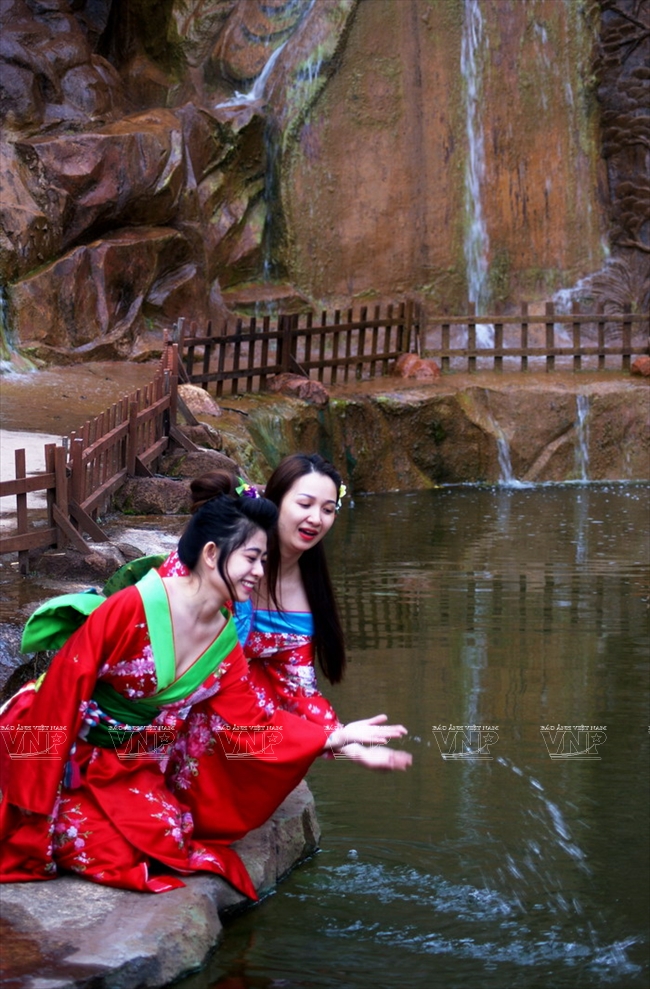This sculpture originated from two ideas, reproducing a primitive Da Lat and also a famous resort and tourism city with its cultural and social identity. Visiting the tunnel, tourists have a chance to learn more about the history of the founding and development of the city.
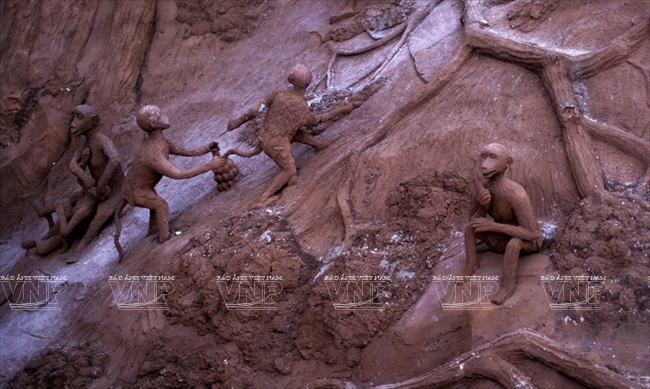 Daily activities of apes in the ancient time depicted with clay sculpture. |
From the entrance of the tunnel decorated with a dragon which symbolises the Vietnamese race, tourists start discovering the beauty of Da Lat through clay replicas of scenic spots like the train station, Bao Dai’s summer palace, the university of Da Lat, the Palace Hotel, Con Ga Church, Linh Son Pagoda, Xuan Huong Lake, Da Lat Market, Lien Khuong Airport, Tuyen Lam Lake and Tinh Yeu (Love) Valley.
Also, along the walkway are clay paradigms of old cars, Vespa scooters, steam locomotives, and household utensils, which trace the development of Da Lat.
The clay sculptural complex set two Vietnamese records for a clay house with the largest area, 90m2, with its top embossed with the Vietnamese map and the most unique clay house. Le Anh Ngoc, a tourist from Binh Thuan, said: “I have visited Da Lat several times, however, the clay tunnel left me wide eyed with wonder. All the sculptures look striking in the romantic space of Da Lat”

